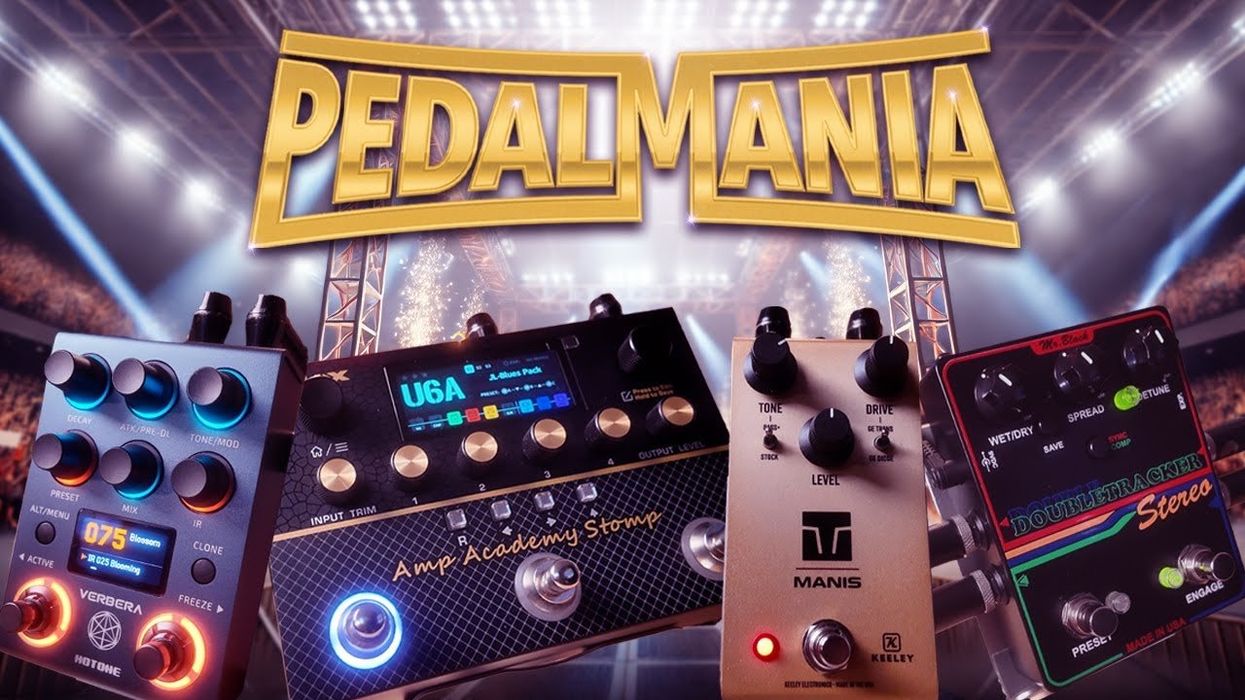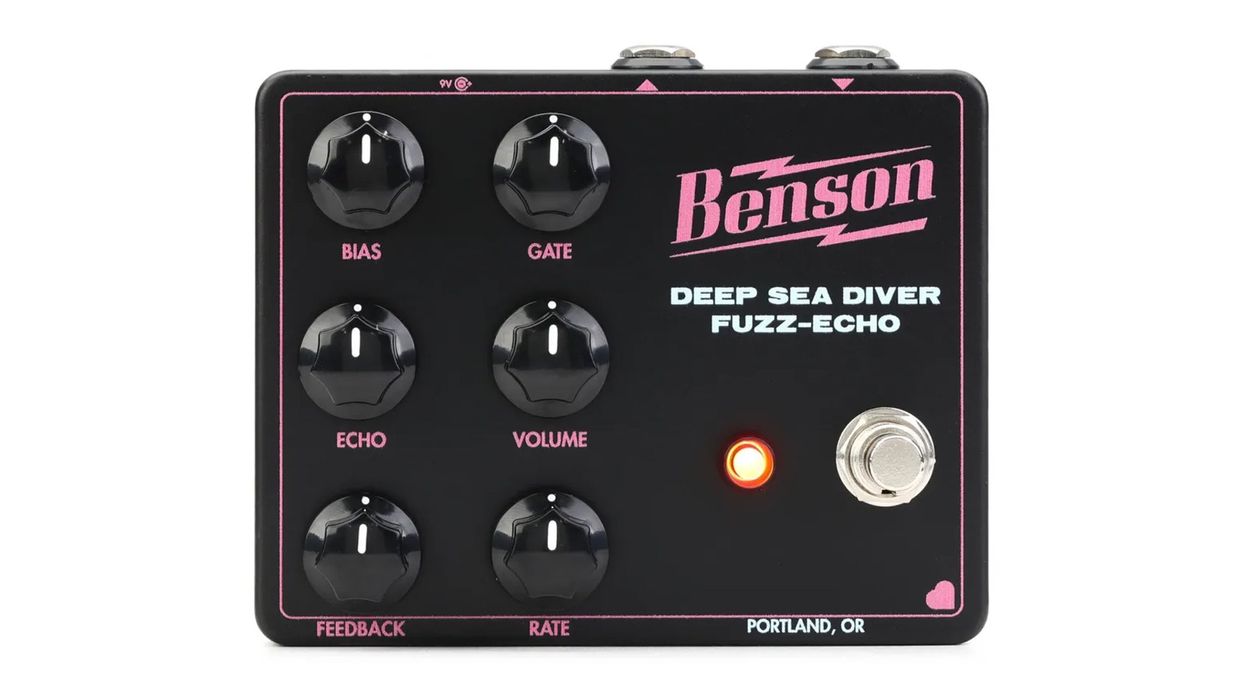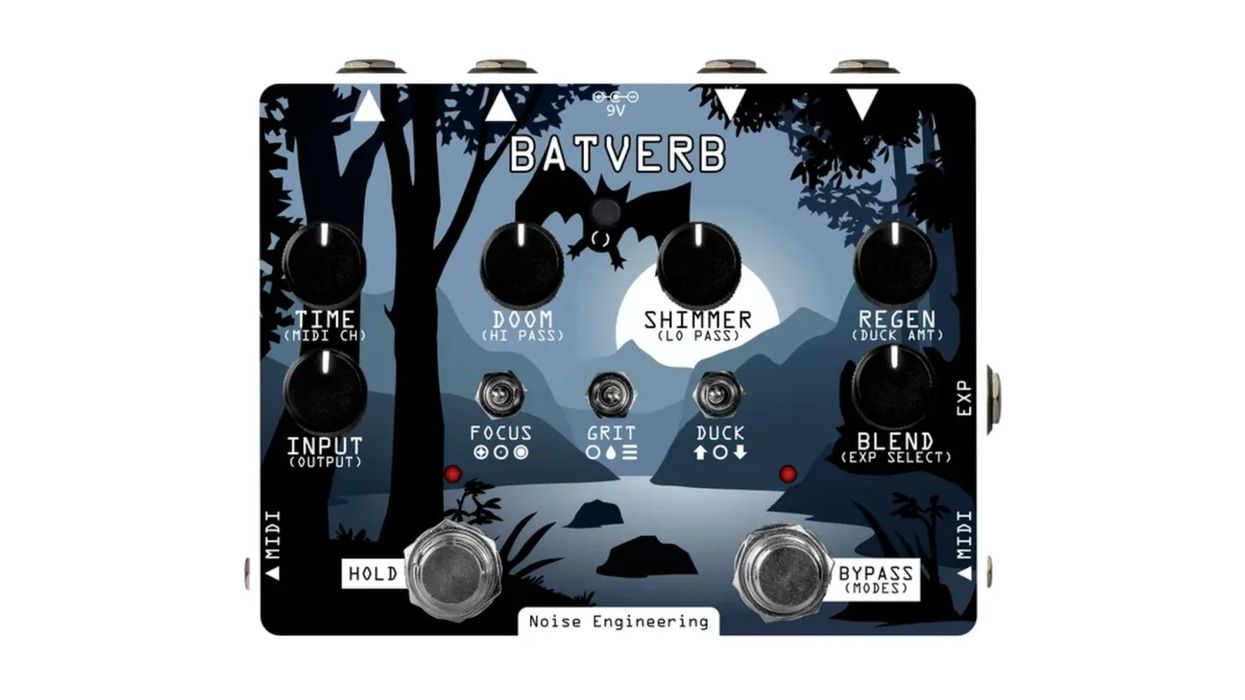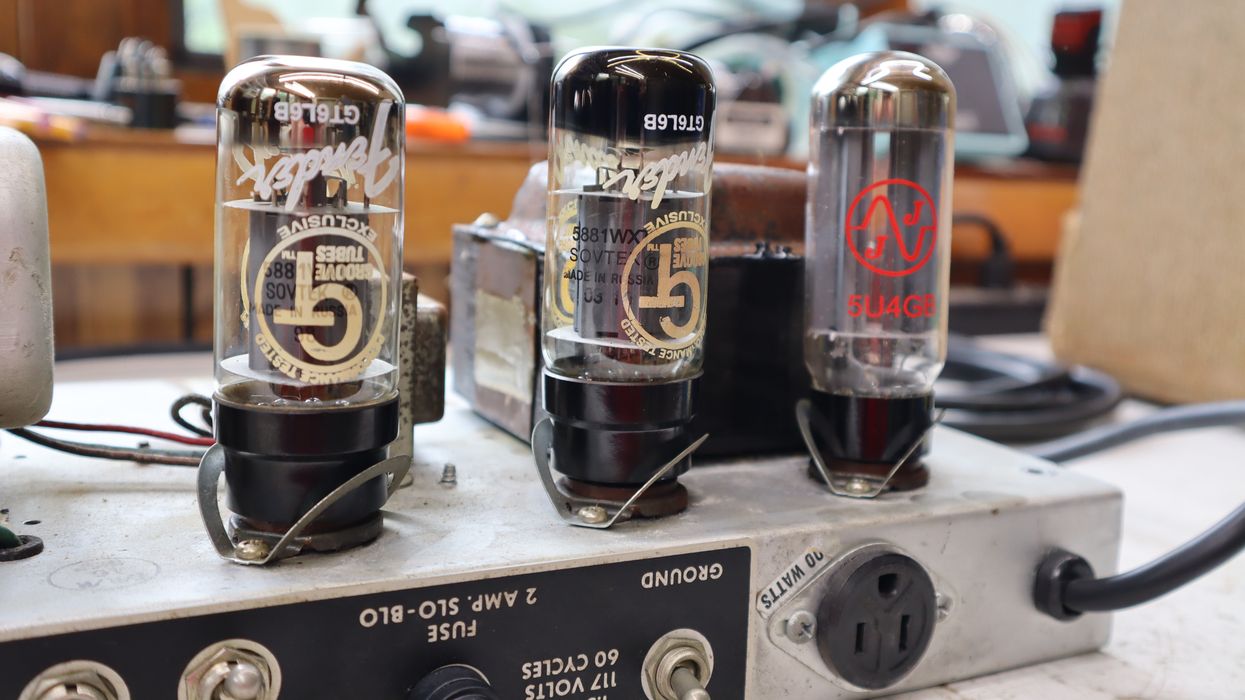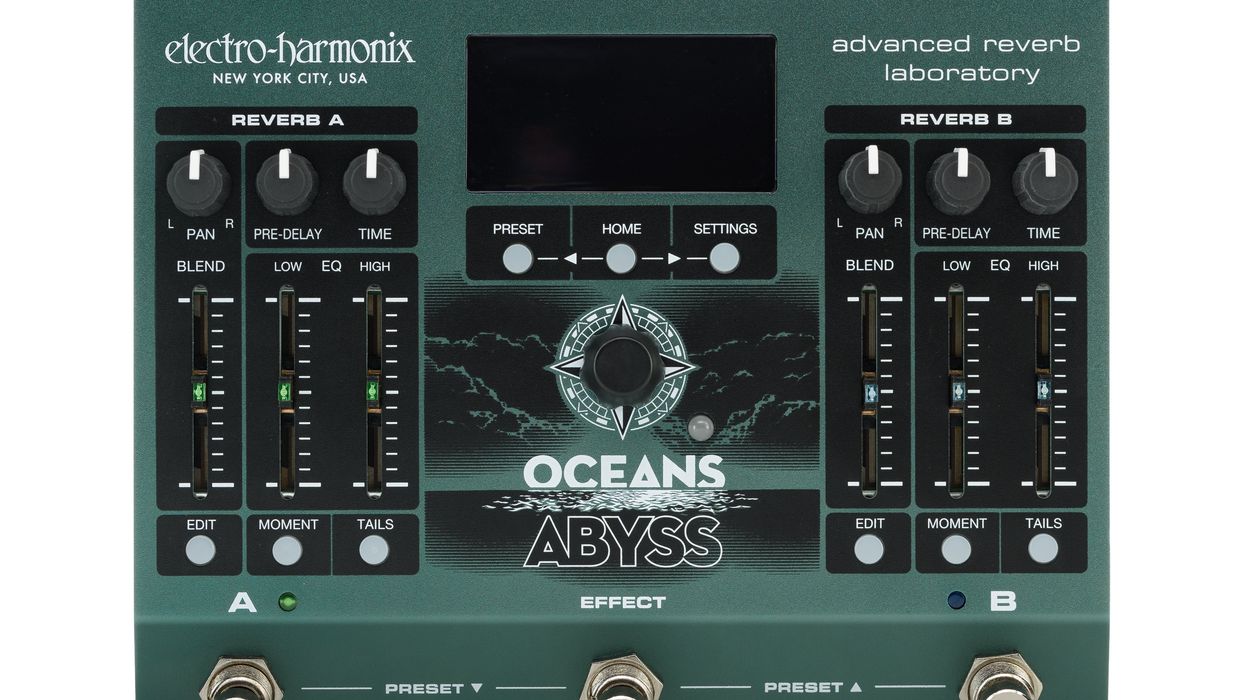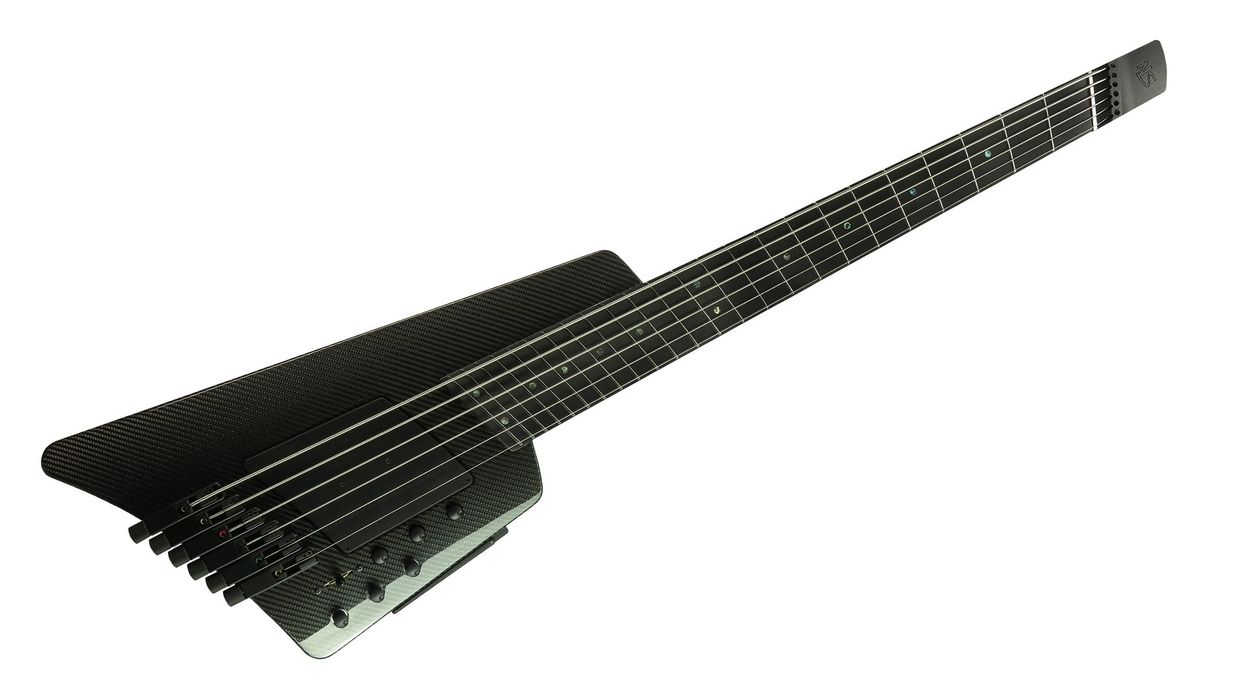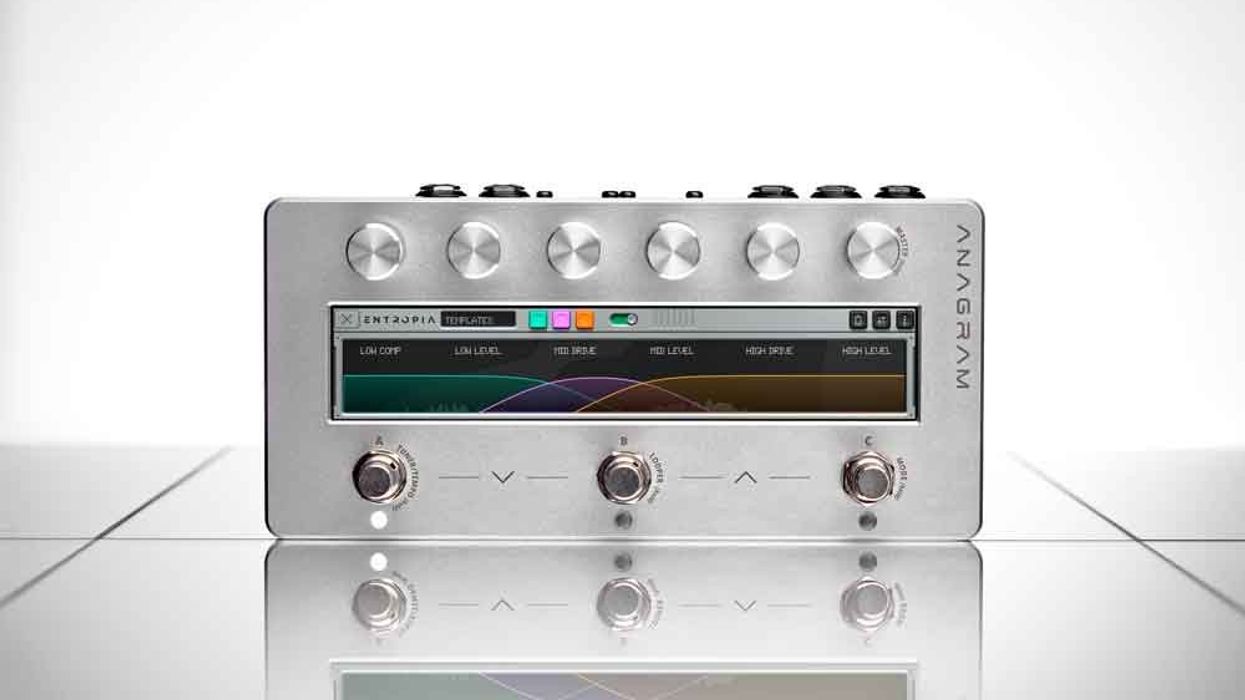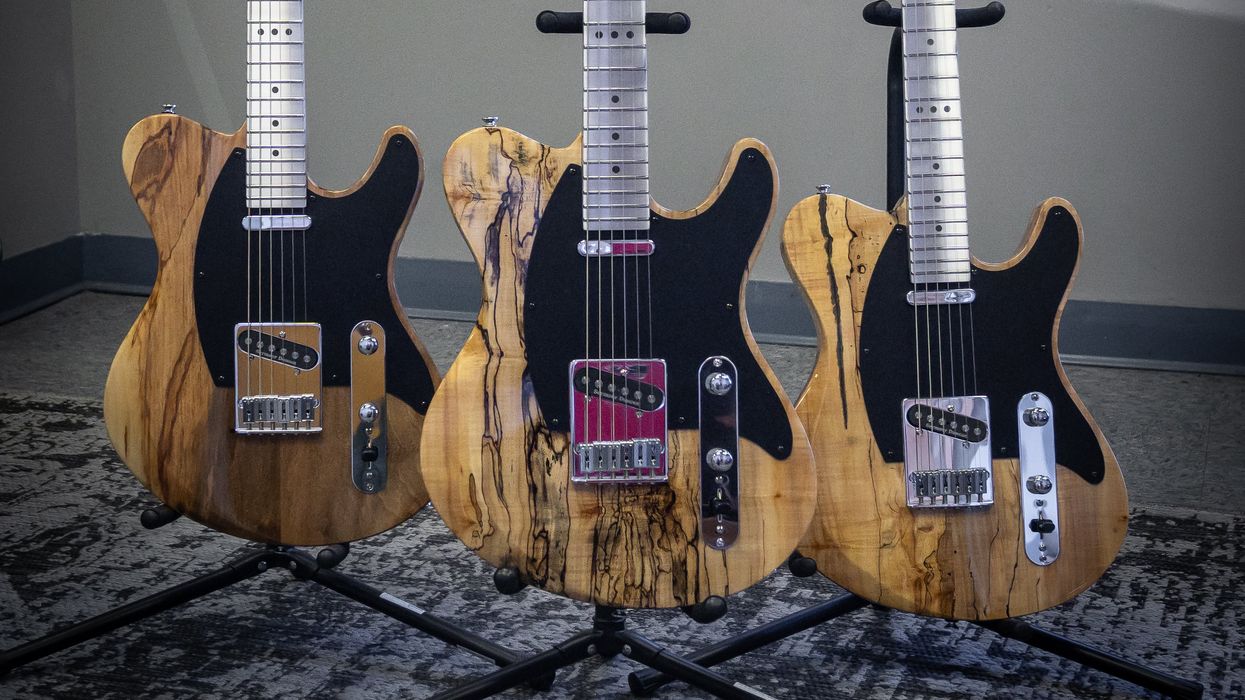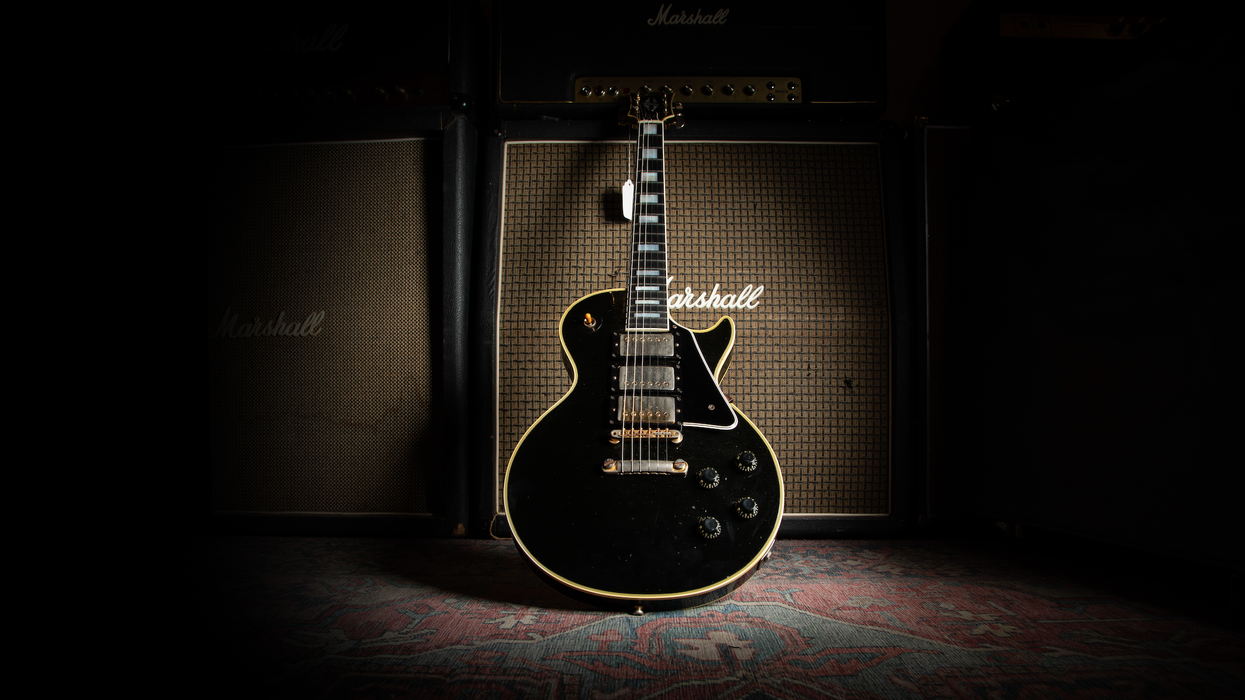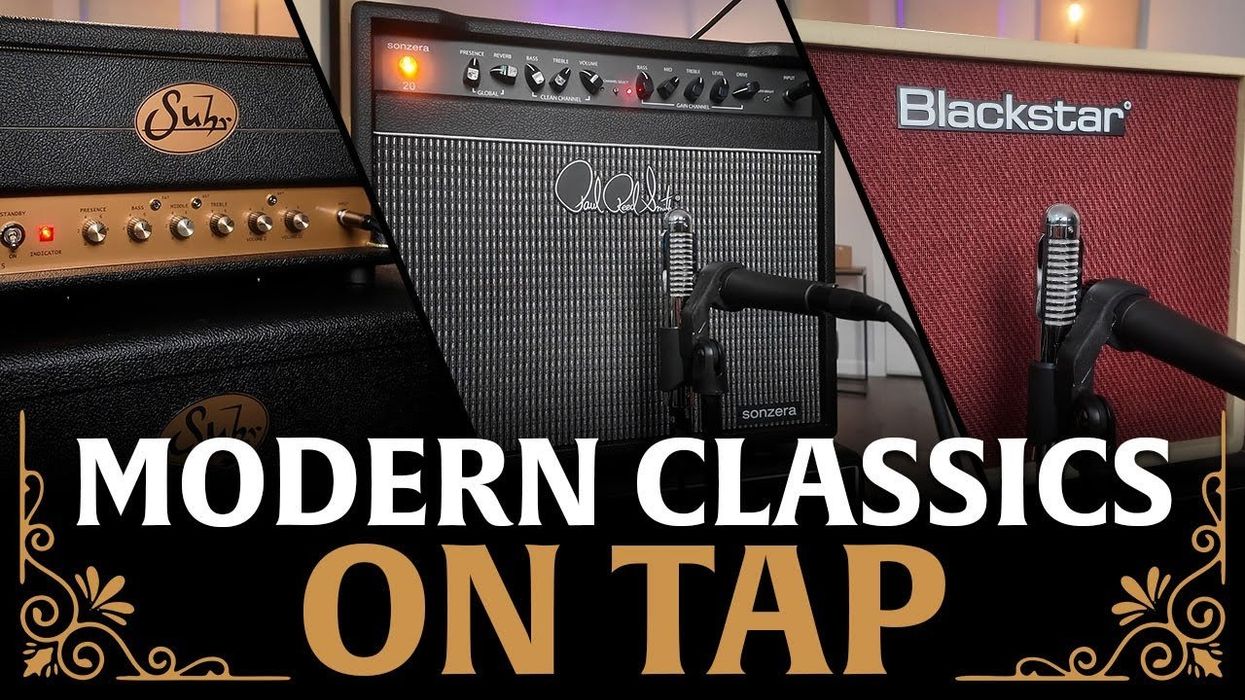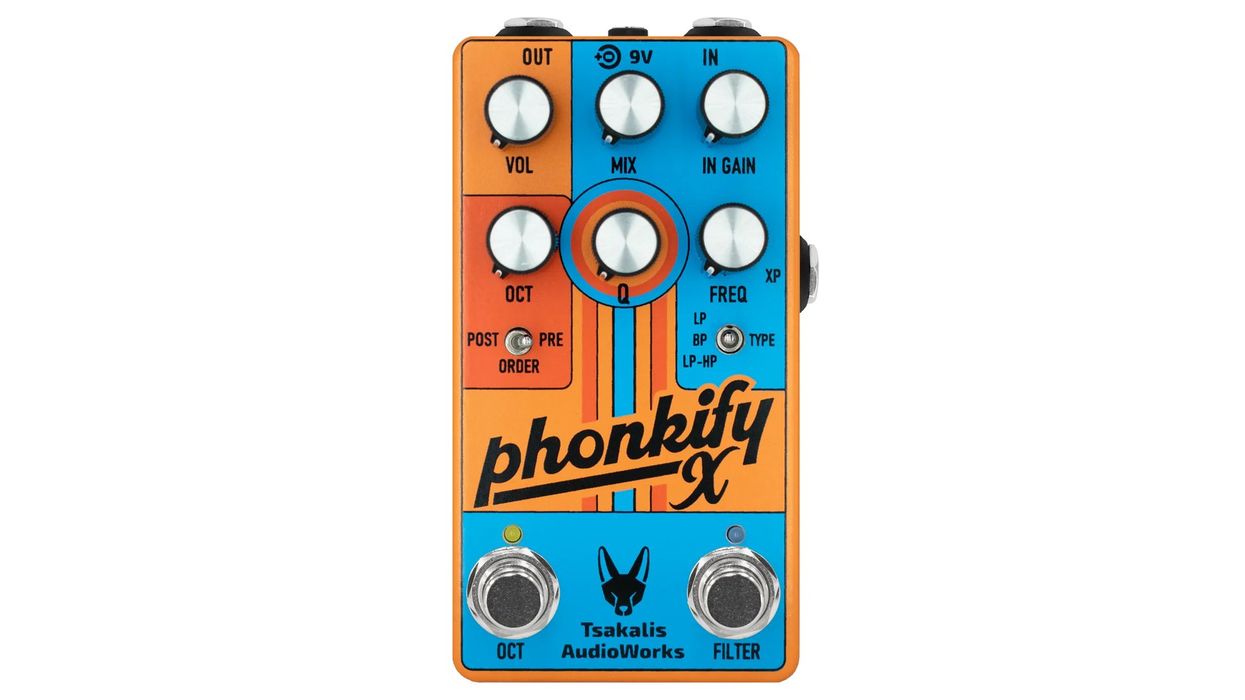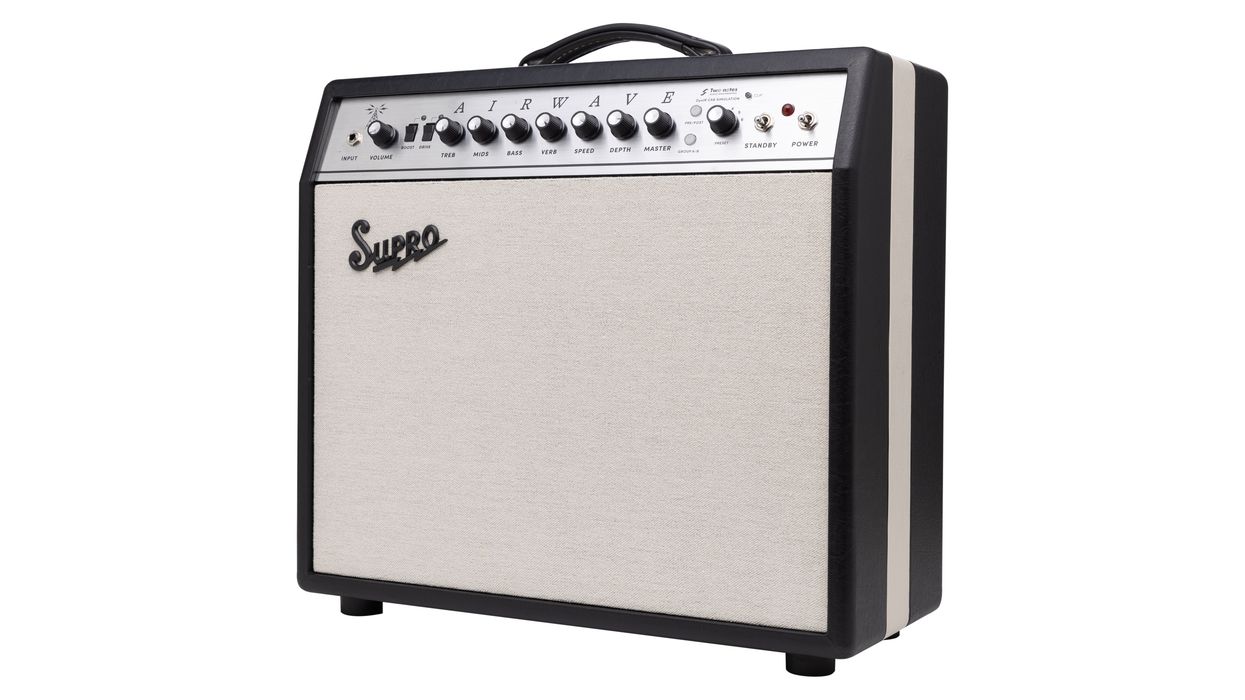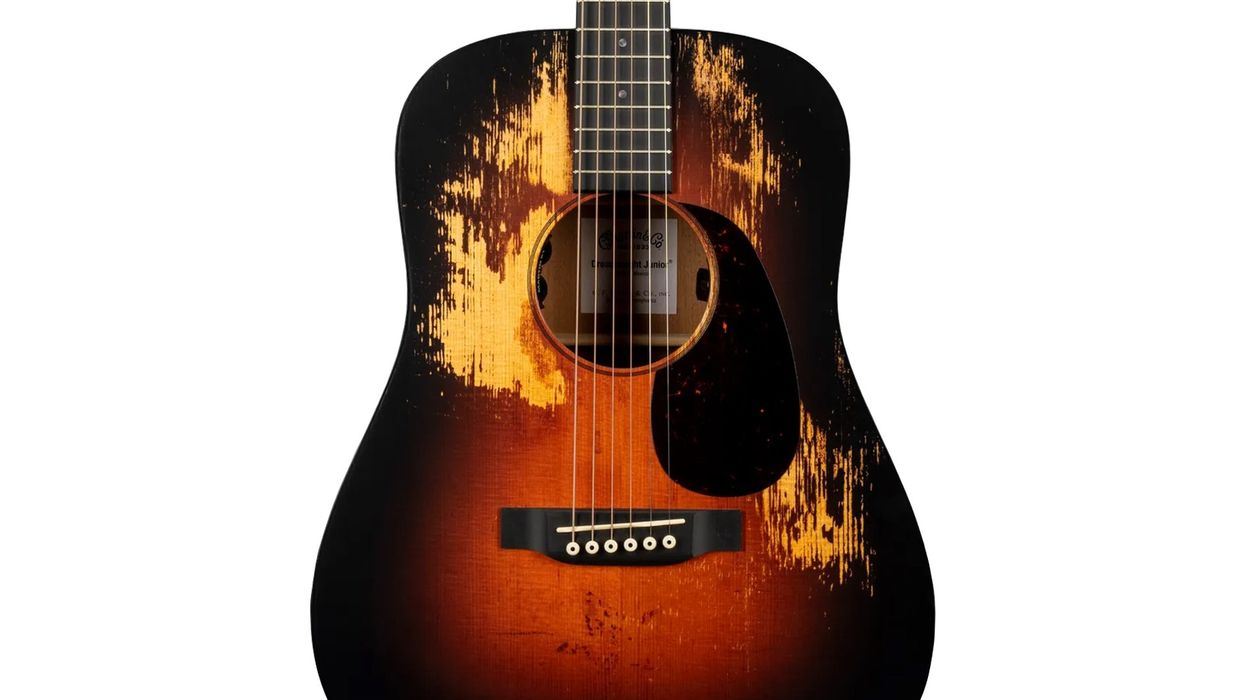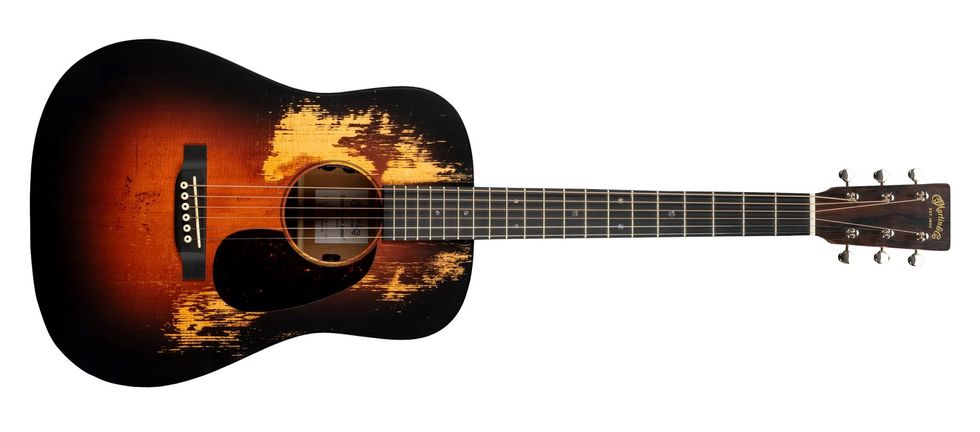[Updated 12/19/22]
The prophet Dirty Harry Callahan once said, “A man’s gotta know his limitations.” The same can be said for some guitars. But sometimes design limitations define a guitar’s purpose—or at least suggest the best sonic or stylistic routes to travel.
The Dunable Cyclops is such a guitar—it’s a one-pickup model that borrows the name of the single-eyed giants from Greek mythology. Like those giants, this instrument is a simple creature that nonetheless merits serious reckoning. And as a steak-and-‘taters road or studio machine, the Cyclops measures up.
- First section, tone pot full up; second section, tone pot half back. Carr Vincent amp: volume at 2; treble, mid, and bass at noon; reverb at 3; drive at 3.5.
- Starts with tone put rolled full back and sweeps up to full on. Carr Vincent amp: volume at 5; treble at 10, mid boost on at 10, bass at noon; reverb at 3; drive at 10. Origin Effect Cali76 compressor.
Beautifully Basic
Our test guitar is as solid and handsome as it is basic, clocking in at about 8 pounds with a mahogany body (swamp ash is also available), a 22-fret, African mahogany 25.5”-scale set neck, and an ebony fretboard (also available in rosewood or maple). The bound neck has a comfortable and fast C-profile, and the jumbo Jescar frets are as smooth as a shaved baby goat. The 18:1 Grover Sta-Tite tuners feel solid and turn evenly. A Schaller Tune-o-matic bridge and trapeze tailpiece—chosen, presumably, to get the most natural string tone—hold things down at the aft end of the instrument.
The Cyclops’ headstock has a smartly angled cut with a mid-peak and a volute where it joins the neck to strengthen that vulnerable spot. The controls are simple: a volume dial and a tone dial that would look comfortable on an old toaster oven. The white-black-white-trimmed black pickguard lends a simple elegance. And the body—with a beveled lower cutaway providing easy access to all the frets—has a cool, raw look. The surface is sanded just enough to leave an almost topographical texture, which is sealed by a thin satin-poly topcoat. And oh yeah! The guitar arrived in an Access hardshell case with a set of Schaller strap lock pegs tucked inside. Bonus!
Hold-the-Phone Tone
Even before plugging in, the Cyclops got on my good side thanks to its solid feel and flawless setup. Action is low and comfy—no fret buzz or ill-defined notes. Bending notes and shaking chords is easy. The tone and volume pots feel slick and are easy to adjust on the fly. And once plugged in, tones are crisp and arresting across the board, and not at all piercing, even with the tone pot turned full up. All guitars should come out of the box this ready to gig.
Dunable’s own Slugwolf bridge humbucker is a beast with just the right amount of hair. At 13.8k, the Slugwolf’s output is hot but not uncontrollable. This single hummer has excellent dynamic response and it’s easy to roll back the howl—or bump it up—with the volume pot. According to Dunable, the alnico 5-style pickup uses 43-gauge wire to allow more turns on the double slug bobbins to increase the magnetic field, resulting in slightly thicker mids and treble response that steers clear of shrillness. Those qualities were audible, whether I played through a vintage Supro combo, an old 50-watt Marshall Super Lead, or a Carr Vincent.
For pure, warm, and edgy rock tone, the Cyclops is extremely satisfying. Even with the tone pot rolled back, there’s plenty of articulation in notes and chords. It lived up to my expectations at a rehearsal, cutting through in the small space like a samurai sword. Looking for a dirty slide tone with lots of sustain, I stomped on my Archer overdrive and rolled the tone pot to about midway, then trimmed the guitar volume with another slight pot adjustment. Notes hung in the air with minimal coaxing, ripe with gritty character. And let’s face it: with only two controls onboard, there’s not a lot of ways to go wrong if you buy into this Dunable’s sound and playability—which I do.
The Verdict
Look—I’m usually a neck pickup guy, but I definitely see eye-to-eye with this Cyclops. (Sorry, I couldn’t resist.) I’d happily invite this monocular monster to any rock, blues, or improv performance—mellow or aggro. It’s not cheap at $1,799 for a guitar with just a bridge humbucker, but it sounds great, feels durable and comfortable, is well constructed, plays like buttah, and looks stripped-down cool. That’s a lot to love.



